The Escalante Design Fremont
| The Escalante Design Fremont |
| What More Could A Man Want |
|
|
|
April 2006 |
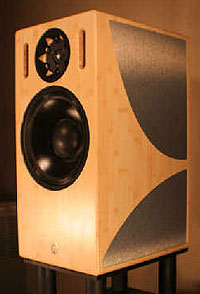 Should’ve kept them boxes
Should’ve kept them boxes
Without knowing it I have been a huge fan of the work of loudspeaker designer extraordinaire Tierry Budge for more than a decade. His handiwork turned up in some of the early Wilson Audio designs (circa 1989-1992), Voce Divina, and in the recent past, Talon Audio. The Talon Audio Peregrine X loudspeakers had been my reference for a longtime (if you’re an audio critic, owning anything for more than five years is considered a long time). I was absolutely in love with everything about these speakers; from their drop-dead gorgeous high-gloss black with chrome trim cabinets, to their unique “eagle talon” shaped “Nest” stands. They boasted bass down below 20Hz and were as musical as all get out, especially after I had them upgraded with Talon’s Common Mode Rejection Circuit (CMRC). The only thing I didn’t like about the Peregrines was that they came in four huge boxes and at the time, my girlfriend Mittie and I were in a space challenged condo a stone’s throw away from the John Hancock Building in downtown Chicago.
I eventually rented a storage space so that I could have a place to store these and other boxes that the various components of my system came in; not to mention the fact that Mittie had a shoe collection that could make Imelda Marcos say “Damn girl! You got a lot of shoes!” So for the first few years that I owned the Peregrines, I kept their boxes in storage. But, as hard to believe as it might be, Imelda … er, uh, I mean Mittie’s shoe collection actually grew and space was already at a premium. Besides, I couldn’t imagine a scenario under which I’d part with my speakers, so I decided to free up some storage space by throwing away those big boxes. But I only got rid of the speaker boxes. I kept the stand boxes because they had a panel of MDF in the bottom of them and were great for packing away heavy items. A few years later, they really came in handy as I moved into the spacious house I have now.
Escaping to Escalante
It was at about this time that Tierry Budge left Talon (for reasons best not discussed here) and hooked up with Matt Waldron, an earnest and business-savvy young musician who lived near Budge in Provo, Utah. Matt admired Tierry’s speaker building prowess, which he knew to be matched only by his decency and work ethic. Before long Matt convinced Tierry to co-found Escalante Design. 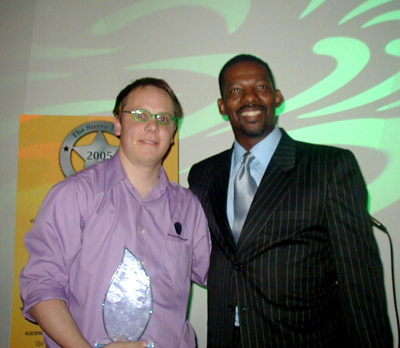 Matt, essentially speaking, wanted to provide Tierry with an environment in which he could focus all of his energy on speaker design and see many of his design theories through to fruition. Escalante’s first offering was the highly praised Pinyon mini-monitor followed closely by its natural partner, the Uinta subwoofer. I was blown away by this combination’s musicality and flexibility for two-channel audio and multi-channel home theater applications and awarded them a Stereo Times Most Wanted Component award in 2005 ( photo above: Matt and our fearless leader CP).
Matt, essentially speaking, wanted to provide Tierry with an environment in which he could focus all of his energy on speaker design and see many of his design theories through to fruition. Escalante’s first offering was the highly praised Pinyon mini-monitor followed closely by its natural partner, the Uinta subwoofer. I was blown away by this combination’s musicality and flexibility for two-channel audio and multi-channel home theater applications and awarded them a Stereo Times Most Wanted Component award in 2005 ( photo above: Matt and our fearless leader CP).
But almost immediately, Budge had ideas for a larger monitor that would build upon all of the musical attributes of the Pinyon/Uinta system. It’s called the Fremont and it is the subject of this review.
As I mentioned earlier, Budge, prior to joining Talon, worked for Wilson Audio (as Manager of Research and Development.) He was directly responsible for the WATT III, Puppy 2, WHOW 2, WAMM VI, and did much of the ground work for what would become the Wilson Grand Slam. At Talon, he designed the controversial and wildly popular Khorus loudspeaker, Roc subwoofer, and others including my Peregrine X’s. His efforts thus far with Escalante have been exceptional as he has worked tirelessly to constantly dig out every last octave and decibel of music that he can. That brings us to the Fremont.
Describing the Fremont is fairly simple. First, take a look at the Escalante Pinyon, now imagine if it had been spending a lot of time around Barry Bonds the last few years. Get my meaning? For a monitor, it’s HUGE! In fact, Budge doesn’t just call it a monitor. Instead, he calls it a “megamonitor.” It’s 14” wide, by 28.5” tall, and 18” deep and weighs in at 110lbs! The standard cabinet is made from bamboo, believe it or not, and is highly dense not to mention extremely attractive. They also have stylish brushed aluminum inlays which add to the speaker’s aesthetic elegance. Escalante offers several other cabinet finishes including the show-stopping BMW® Indianapolis Red Metallic that they showed in their demo room at T.H.E Show.
The Fremont uses two direct coupled 12” bass-mid drivers and the famous Scanspeak Revelator R2904 tweeter. There are two slot ports bookending the tweeter and a slick looking laser cut aluminum Escalante logo at the bottom. At the rear you’ll find only a single set of Cardas speaker connections. Waldron designed a slick looking and nicely finished stand that puts the tweeters right at ear height. Despite its massive proportions this is a very attractive package and should not cause your significant other any decorating stress.
Technically speaking …
I interviewed Tierry Budge in order to ensure that the design intent of the Fremont was accurately conveyed to you, dear readers. The Fremont is 93–dB sensitive. However, this is somewhat deceptive in that it is very friendly to amplifiers (a good thing.) Also, the bandwidth is 18Hz-50kHz, +/- 3dB. According to Budge, the crossover points were a bit trickier. “At 80Hz, there is a crossover point between the internal and external woofer. The cone of the external woofer takes the response on up to nearly 500Hz. It’s at this point that a very delicate balancing act had to be struck,” said Budge. “If we didn’t have the ‘group-phase’ loading, the woofer would have a rise-time somewhere above 3000uS (probably closer to 5000uS.) However, in this loading the woofer has a 70uS rise-time…faster than the typical high-end, 2″ dome midrange,” said Budge.
This meant that Budge would design the dust-cap of the woofer from-the-ground-up. “The dust-cap had to be a very specific size and geometry to roll-in naturally where the cone no longer radiated semi-omnidirectionally. Because of its shape and size, it radiates nearly omnidirectionally all the way up to 3.2kHz (approximately). Since the tweeter itself is crossed in at 2.5kHz (and continues to 50k), the whole speaker radiates nearly omni-directionally – or, at least until about 22kHz, where the tweeter gradually becomes less and less omnidirectional. Because the dust-cap began radiating like a dome midrange, it necessitated my specifying the use of several, very low-q materials; three, to be exact; four, if you include the bonding agent.”
The “speed” that Budge needed to accomplish a believable midrange, brought along with it some added benefits. “The 12″ woofer (in this loading only) can complete 11 complete excursion cycles while the best quality audiophile 5.25” drivers can only complete one,” said Budge. This type of response makes for a speaker that is not only easier on small amplifiers, but also has a tendency to move a fairly extreme amount of air without having to accomplish massive excursions themselves. Additionally, intermodulation is kept at extremely low levels. All of this not only makes the speaker more drivable, but far more comfortable at high volumes as well.
The payoff
So what is the sonic payoff for all of this techno-speak? I got a loudspeaker with stunning top-to-bottom resolution, power, and lifelike presentation. In other words, one of the most satisfying music listening experiences I have ever had. It also means that I will be looking for boxes to pack my beloved Peregrine X’s in.
I won’t go into a detailed discussion about what the Fremonts did better than the Talons to prompt the change. The change itself says enough. I’ll let it suffice to say that no other speaker that has entered my home (and there have been a lot of them) has made me feel the way about listening to music that the Fremonts have.
Fresh out of the box (or crates in this case) the Fremonts sounded like you might expect, a little too tight on the low end and a bit etched up top. The midrange, on the other hand, showed the promise of what was to come. Imaging was very nice and stage depth was surprisingly well delineated. But after about 200 hours of break in, everything was as I liked it.
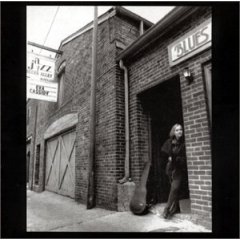 To me, no other type of recording can allow you to fully evaluate the performance of a loudspeaker than a good live recording. And when it comes to live recordings, it doesn’t get much better than the late Eva Cassidy’s Live at Blues Alley [Blix Street GS-10046]. If there was ever an award for most used recording during a hi-fi show, it would be the second track on this disc, “Stormy Monday.” Cassidy’s voice and vocal styling was made for a venue like this. She personalizes every song with pure soul and passion. And when you can gain a sense of that while this recording is being played on your system, you truly have something special. The Fremonts rendered her voice holographically, letting it seem to hover in three-dimensional space. The position of her bandmates within the soundstage is easily discernable as is the characteristics of their instruments. That Budge can get the dust-cap on the bass driver to move so fast that it can reproduce midrange detail of this level is astonishing. And the ability of the Fremonts to convey the size of the venue is eerie, especially while listening in the dark, as I often do.
To me, no other type of recording can allow you to fully evaluate the performance of a loudspeaker than a good live recording. And when it comes to live recordings, it doesn’t get much better than the late Eva Cassidy’s Live at Blues Alley [Blix Street GS-10046]. If there was ever an award for most used recording during a hi-fi show, it would be the second track on this disc, “Stormy Monday.” Cassidy’s voice and vocal styling was made for a venue like this. She personalizes every song with pure soul and passion. And when you can gain a sense of that while this recording is being played on your system, you truly have something special. The Fremonts rendered her voice holographically, letting it seem to hover in three-dimensional space. The position of her bandmates within the soundstage is easily discernable as is the characteristics of their instruments. That Budge can get the dust-cap on the bass driver to move so fast that it can reproduce midrange detail of this level is astonishing. And the ability of the Fremonts to convey the size of the venue is eerie, especially while listening in the dark, as I often do.
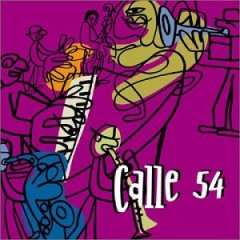 Dynamics are superb. I put on the soundtrack to the wonderful Latin-jazz documentary, Calle 54 [Blue Note] and listened to the brilliant pianist Chano Dóminguez perform “Oye Cómo Viene.” Dominguez’s fingers seem to dance across the keys and produce music that is light, yet very rhythmic. The Fremonts reminded me that the piano is essentially a percussive instrument because I could hear the hammer strikes on the strings and the decaying vibration that follows. This is nerdy stuff but man is it cool. I found myself digging up live recordings just so I could see what else I could hear that I hadn’t before.
Dynamics are superb. I put on the soundtrack to the wonderful Latin-jazz documentary, Calle 54 [Blue Note] and listened to the brilliant pianist Chano Dóminguez perform “Oye Cómo Viene.” Dominguez’s fingers seem to dance across the keys and produce music that is light, yet very rhythmic. The Fremonts reminded me that the piano is essentially a percussive instrument because I could hear the hammer strikes on the strings and the decaying vibration that follows. This is nerdy stuff but man is it cool. I found myself digging up live recordings just so I could see what else I could hear that I hadn’t before.
Now I know some of you bass-lovin’ hamsters out there are reading this and saying: “This is all cute Dave, but get to the good part. Can these things crush my skull with some subterranean bass or not?” The answer, oh inquisitive ones is: WHAT DO YOU THINK A PAIR OF 12” WOOFERS THAT DIP DOWN TO 18HZ ARE GONNA DO FOR YOU! Don’t forget that the path that has brought Tierry Budge to where he is was paved by lessons learned from designing subwoofers and bass enclosures for Wilson, Voce Divina, and Talon. Lord knows if the Talons had nothing else they had thunderous bass. Yes, the Fremonts can get into some serious throw-down when it comes to bass. Try listening to any Danny Elfman soundtrack and prepare to be blown away. My personal favorite is the Planet of the Apessoundtrack [Sony]. From start to finish this disc is loaded with dazzling dynamics and bass deep enough to be felt on Dante’s fifth level. Particularly track four, “The Hunt.” Percussions slam! Cymbals crash! And low level energy is reproduced with weight and presence. Listening to this track made me feel as though I was having a Jumanji experience complete with animals smashing through my 56” Hitachi.
Conclusion
High-end audio is a funny business and you never know where the next great thing is going to come from. I spent a lot of time admiring this loudspeaker at this past T.H.E. Show and now I’m enjoying it on a daily basis in my home. At the Show it was partnered up with the incredible Butler Audio Monad tube monoblocks and showed that even on low-powered tube amps you can still get an incredible amount of dynamics and deep bass. At home, I’ve also heard the Fremonts on $50K worth of solid-state amplification from Tidal Audio, the $3K Luminance KST-150, and the ICE-Module powered Red Dragon Audio Leviathan mono amps, and let me tell you, they sounded stellar with all of them.
But beware, they’ll be honest with you about the quality of your amplification and you will hear the differences between components. I used one amp that has a known tendency to be a little bright sounding and the Fremonts did not sugarcoat that. Now of course if you like bright sounding amps then the Fremonts won’t cover up what you enjoy. The same applies to tube amp lovers or folks who like their music slightly to the warm side of neutral. The Fremonts simply reveal what you love about rest of the components in your system. I don’t know about you, but when I put together a system based on a certain sonic characteristic, I don’t want to finish off the system with a speaker that undoes everything I tried to do. Just give me the truth from my discs. Give me the magic of the live performance. Give me the Escalante Design Fremonts.
Dave Thomas
______________
Specifications
Design Type: Direct Coupled
Woofer: 2 x 12″
Tweeter: ring radiator, soft-dome
Freq. Response: 18Hz – 50kHz
Amp: 1 – 1000 watts
Sensitivity: 93 dB
Impedance: 8 Ohms nominal
Height: 28.5 inches (73cm)
Width: 14 inches (36cm)
Depth: 18 inches (46cm)
Weight: 100 lbs. each (kg)
Shipping Weight: 160 lbs. each (73kg)
Stand Dimensions
Height: 16 inches (41cm)
Width: 14 inches (36cm)
Depth: 18 inches (46cm)
Weight: 54 lbs. each (25kg)
Shipping Weight: 112 lbs. each (51kg)
Price: $14,990.00/pair
Address
Escalante Design
3585 N. University Ave. #200
Provo UT 84604 USA
Phone: 801-373-4712
E-mail: people@escalantedesigns.com
Website: http://www.escalantedesigns.com
![]()
Don’t forget to bookmark us! (CTRL-SHFT-D)
Stereo Times Masthead
Publisher/Founder
Clement Perry
Editor
Dave Thomas
Senior Editors
Frank Alles, Mike Girardi, Russell Lichter, Terry London, Moreno Mitchell, Paul Szabady, Bill Wells, Mike Wright, and Stephen Yan,
Current Contributors
David Abramson, Tim Barrall, Dave Allison, Ron Cook, Lewis Dardick, John Hoffman, Dan Secula, Don Shaulis, Greg Simmons, Eric Teh, Greg Voth, Richard Willie, Ed Van Winkle, Rob Dockery, Richard Doron, and Daveed Turek
Site Management Clement Perry
Ad Designer: Martin Perry




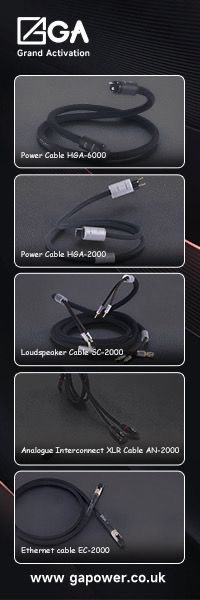
Be the first to comment on: The Escalante Design Fremont